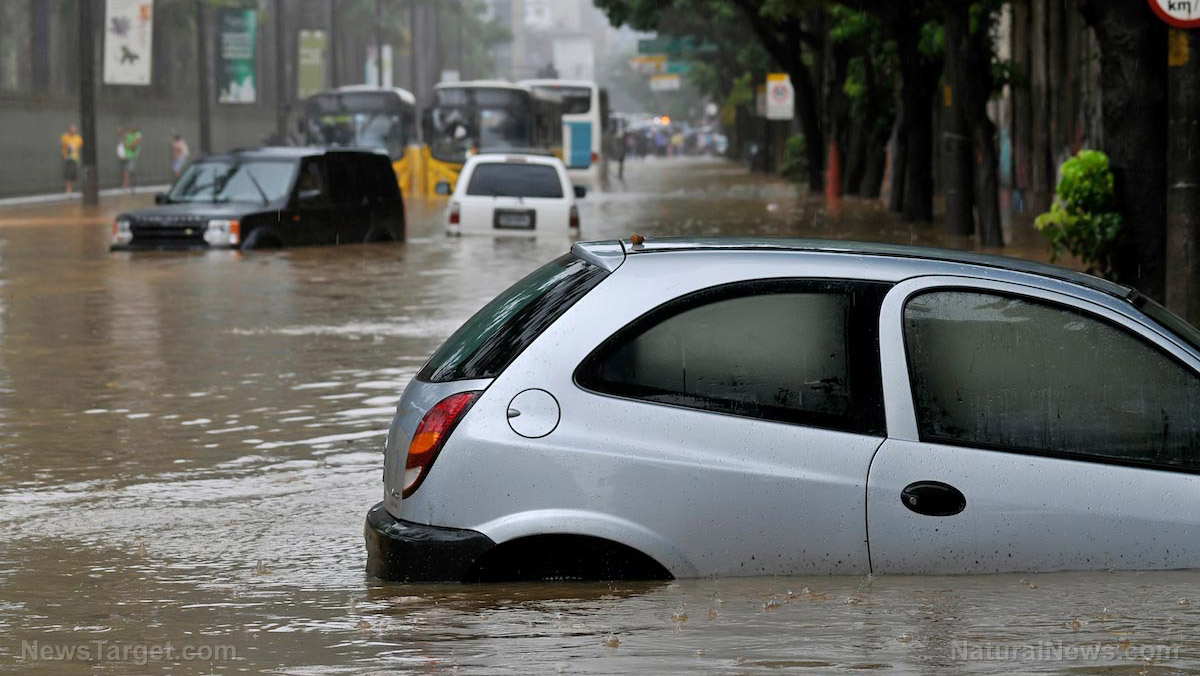Massive solar flare could knock out the power grid in 12 hours – are you prepared?
08/13/2015 / By Chris Draper

In June, the sun seemed to have a tempter tantrum, releasing two solar flares towards Earth in a single week. Scientists are keeping a close eye on the sun’s weather cycle. A large enough solar flare could knock out power grids, plunging cities across the globe into darkness in as little as 12 hours.
Solar flares are a common phenomenon that accompany the sun’s eleven-year cycle. Scientists monitor the solar cycle by noting the number of sun spots peppered across the sun’s equator. Solar flares usually form in the same region as sun spots; they occur whenever the sun belches a stream of charged particles from its surface.(1)
A coronal mass ejection occurs whenever an explosion on the surface of the sun causes some of its corona to detach. These can cause serious damage to satellites if directed towards Earth. The strongest observed coronal mass ejection to bombard the Earth occurred in 1859, which caused telegraph machines to spark and set flame.(2)
Where there is violence in nature there is also beauty. Physicists characterize the plasma attached to a coronal mass ejection as a fourth state of matter which is responsible for the aurora borealis. The plasma is comprised of negative and positive charged particles. These particles peal apart when they come into contact with the Earth’s magnetic field, spiral down the poles and paint the sky different colors, from green to purple. This is why the aurora borealis is best seen in the North.(3)
Earth overdue for coronal mass ejection
If the earth were hit by a coronal mass ejection similar to the one that occurred in 1859, the damage would be beyond comparison. Unlike the world of 1859, the world today is dependent upon an interconnected web of computers. The high-energy particles can disrupt satellite communications and coat airplanes with radiation. This can also disrupt navigational systems, telecommunications, trains and power grids, and cause major blackouts in cities. A coronal mass ejection pretty much puts a world-wide telephone call on an indefinite hold, and as everyone knows, indefinite phone calls can be costly.(4)
Sponsored solution from the Health Ranger Store: The Big Berkey water filter removes almost 100% of all contaminants using only the power of gravity (no electricity needed, works completely off-grid). Widely consider the ultimate "survival" water filter, the Big Berkey is made of stainless steel and has been laboratory verified for high-efficiency removal of heavy metals by CWC Labs, with tests personally conducted by Mike Adams. Explore more here.
The faster a coronal mass ejection is emitted by the sun, the greater the potential impact. The odds of a coronal mass ejection striking the earth each year is about 1 percent, but that doesn’t mean we shouldn’t act accordingly.(3)
The British government warns that, in the event of a coronal mass ejection, citizens would have at best a 12-hour window to prepare.(5) Airline operators would particularly appreciate an advanced warning in such a situation in order to reroute airplanes. Power outages in major cities for a week, month or year could cost $1 trillion to $2 trillion in losses.(3)
Prepare for the flare
The current solar cycle peaked in early 2014.(6) The British government reports that improvements have been made in aviation and central government coordination; however, more work still needs to be done. Rail and financial sectors are particularly unequipped to respond to damage caused by space weather.
The government recommends preparing for the solar storm in the same way you would prepare for any other natural disaster. Make sure to stock up on plenty of food and water. In addition, make sure to have basic households items, including toothpaste, tooth brushes, laundry detergent and an emergency medical kit. Gasoline can be useful as well, although a large enough coronal mass ejection could wipe out most newer cars. Keep these considerations in mind to help you prepare for the flare.
Sources include:
(1) http://www.livescience.com
Tagged Under: blackout, electromagnetic pulse, power grid, preparedness, solar flare




















